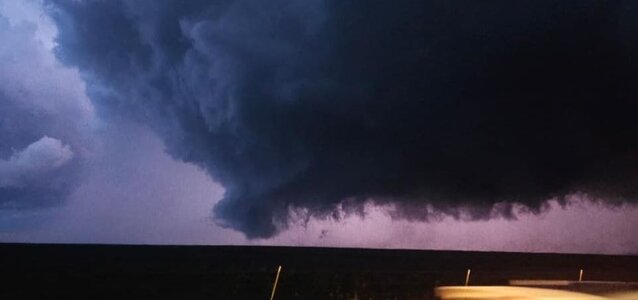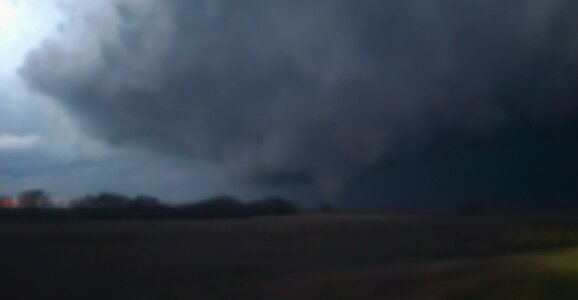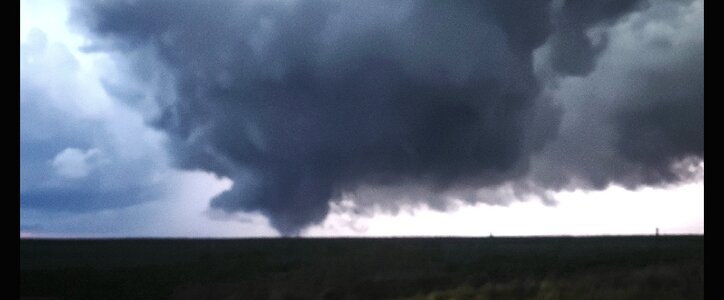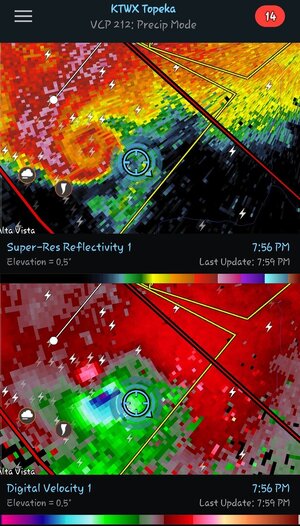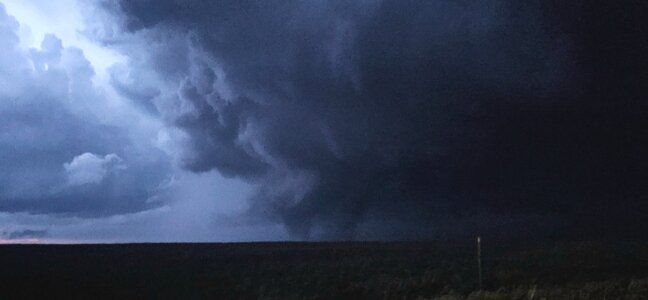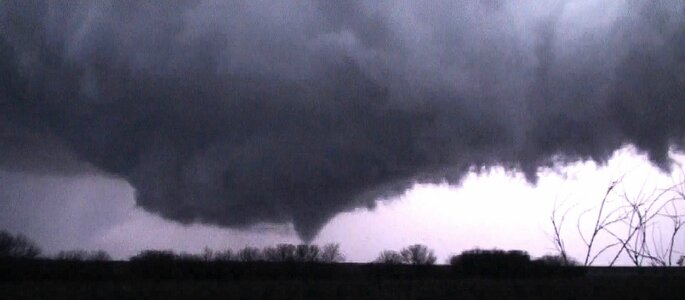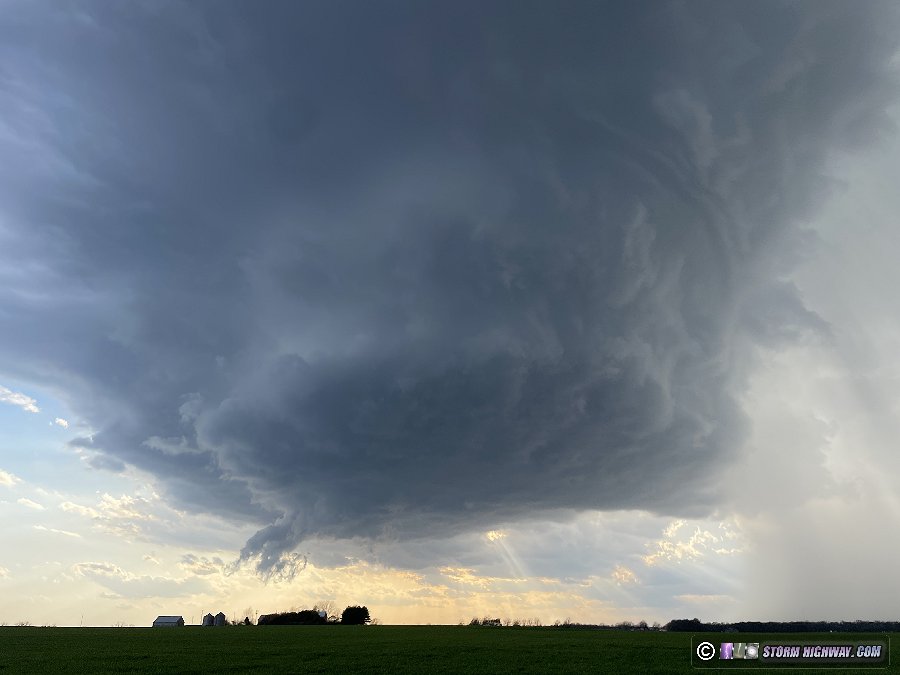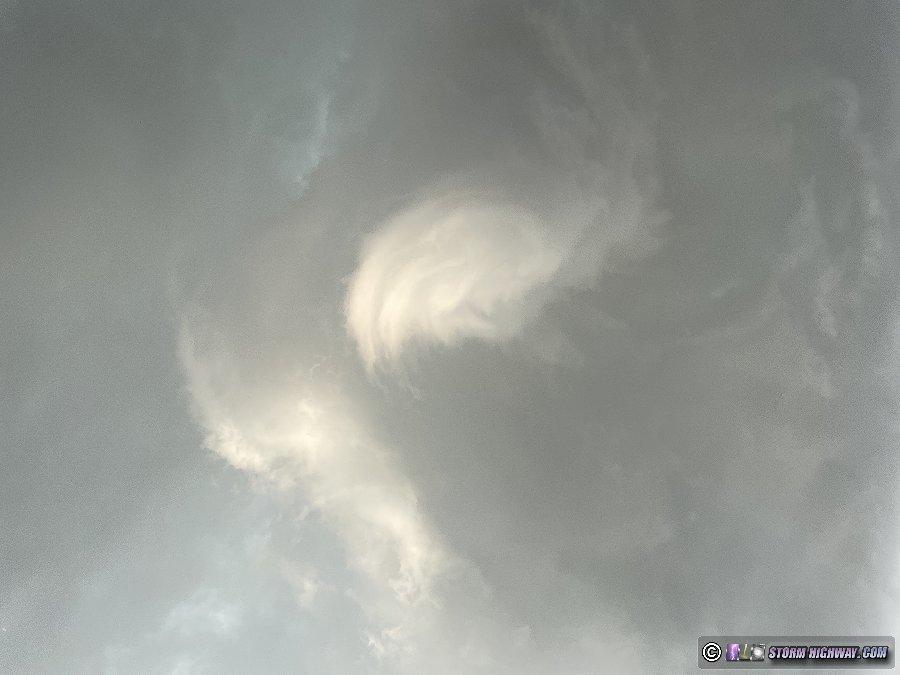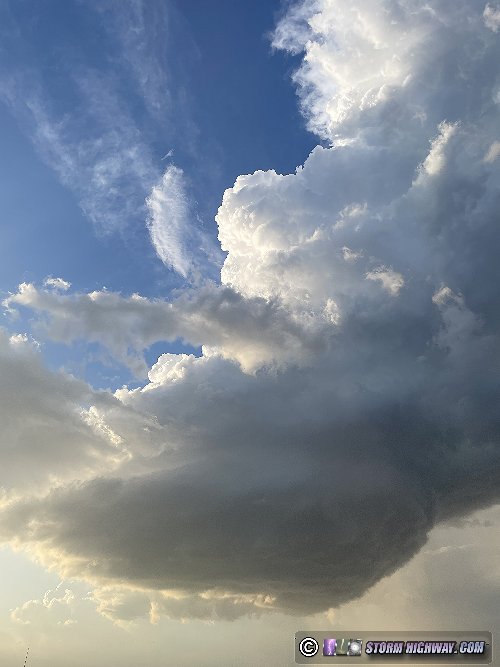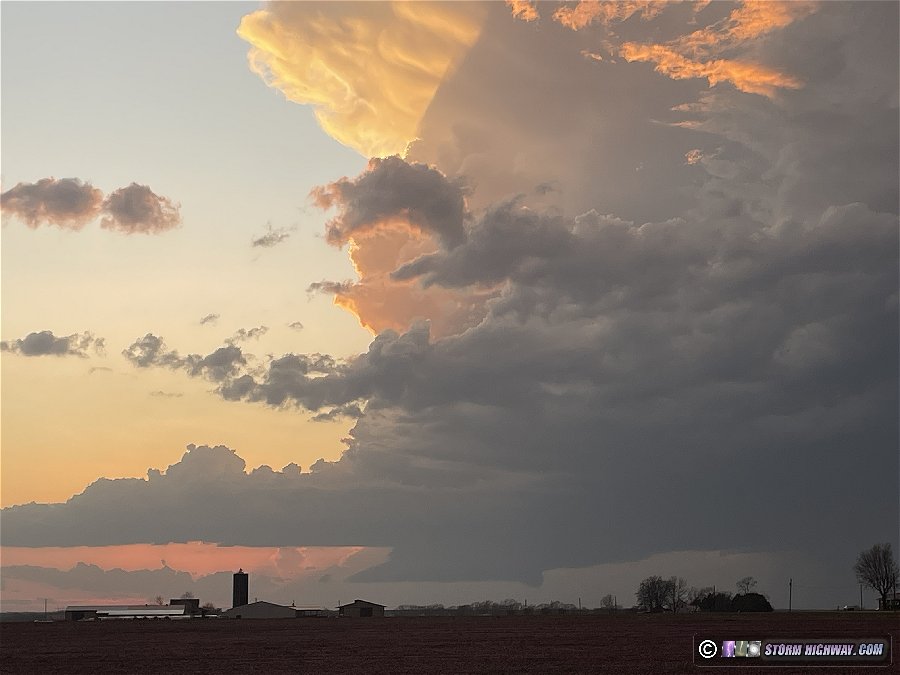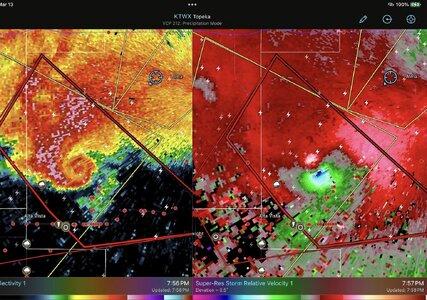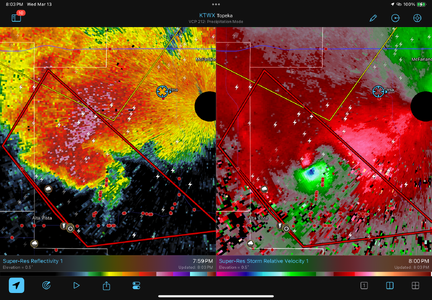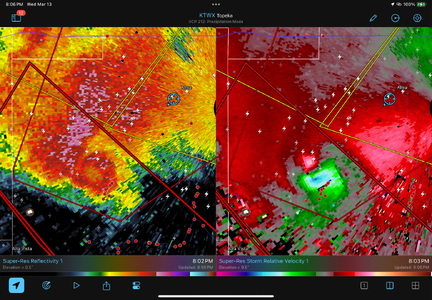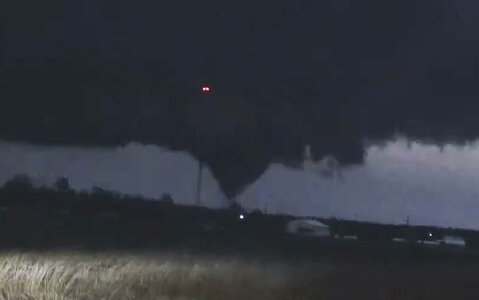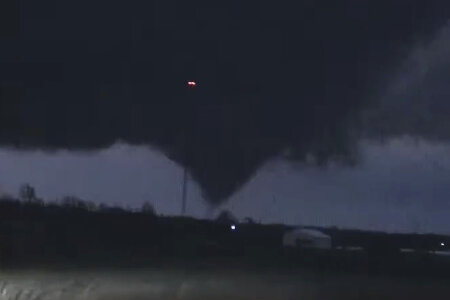This was such a bad bust of a chase, it would not be worth a post either in the EVENT or REPORT threads unless something could be learned from it.
The optimal target area in KS, as described by
@Mike Smith, was not practical for me on 3/13, so I opted to keep an eye on the dryline in OK, just in case. (Not much hope, really, with poor moisture convergence, strong capping, etc. In the SPC 1630Z Convective outlook, the severe potential was “expected to remain very isolated and uncertain regionally.”)
Despite the high-bust potential, I did not want another of those “Caught Looking” chases where I was sitting at home when a single cell broke the cap.
At 21Z the Oklahoma Mesonet was showing an odd dryline bulge approaching OUN, and the 21Z Norman sounding also suggested the cap was either weakening, or the dryline was just moving through the area. By 22Z, a few cumulus were forming along the dryline, so I headed out with my daughter, who hasn’t yet been out on a chase in OK. Here’s the 21Z OK Mesonet data with OUN marked by a white circle. I find this display format easier to read than the maps put out on the OK Mesonet App. (I’m working the bugs out of my mesonet plotting code but I’ll get there. Nothing outside the OK border should be regarded as real…yet.)
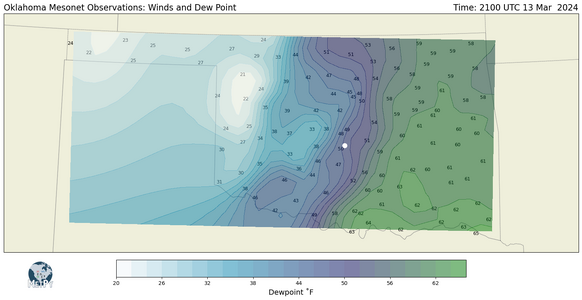
We drove along US-60 towards Tonkawa, which I think is Osage for “The Place Chases Go to Die.” (This was a mistake, by the way: all day dewpoints had been increasing from the south, so the richer moisture fields were always going to be south.) By 2331Z, Mesoscale Discussion 221 was issued for E OK into SE KS. We had been watching the towering cumulus mentioned in the MCD for a while. But from the ground, they were unremarkable, and there was visible evidence they were struggling to maintain themselves.
By 715PM CD
T (3/24 0015Z), things are dissipating, and I really think
cumulus medocris would be a better classification for these clouds by that time. Only far off to the south was there anything that could lay claim to the title “towering cumulus”.
[Here should be a JPG of what the TCU looked like from the ground but all image sizes are rejected as "too big". I think it's important to document how things looked from the ground: they don't look like TCU at all.]
Most important part of the day: my daughter just moved here a year and a half ago, but had never been to this part of Oklahoma. She thought it was absolutely beautiful, and the view worth the trip.
By 1930 CDT, this southern cloud mass had developed a weak radar echo. The cell was near Stroud, OK, 65 miles due south as the crow flies. It rapidly became supercellular, splitting, and dropping 1” hail along its path towards Tulsa. There was no way to
really catch it, given the road network, but since it was on the way home, it was in front of us the whole way.
What Went Wrong?
Other than the decision to go out at all, I'm not sure that’s the right question. Better to ask, “What could have been done better?” Obviously heading down I-44 towards OKC would have put us in position for the storm, period. But other than a vague “further south would be better”, was there any overlooked information? Anything to learn?
I think so—I overlooked the potential for “underrunning”. In most of the papers I’ve read,
underrunning is usually described as a situation “where warm moist air flows out from under the western or northern edge of the lid”. Generally, it seems to occur when a perturbation causes the local wind field to turn more normal to the lid, and causes the mT airmass under the lid to undercut the uncapped cT air mass W of the dryline. This is my understanding: the underrunning air represents a density current that is either buoyant enough for ascent in the cT air or gets caught up in the solenoidal circulation around the dryline, or both.
For this report, I checked the potential for underrunning late in the afternoon on March 13. The “lid” is formally defined by
Carlson, et. al. as the isopleth of their Lid Strength Index equal to 2K. Anything below 2K favors severe weather if convection can be initiated, while severe weather becomes more and more unlikely as LSI increases above 2. For the 00Z NAM model output on March 14, the LSI analysis looks like this:
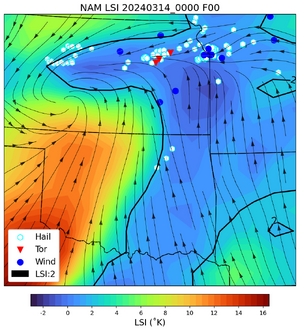
In OK, there is a significant component of the surface wind field normal to the Lid (the heavy contour represents the value of 2K). You can see the Stroud storm track from the hail reports that start just at the lid edge, indicating convection initiated W of the lid, as would be expected in the case of underrunning.
The positions of the dryline and surface fronts are obvious from this “stability analysis”. Note: I take the “lid” part of the definition of underrunning very literally; although the lid generally seems to follow the position of the dryline, I think it’s important not to assume they are the same.
So, it certainly looks like underrunning could have been involved in the development of the Stroud storm, and I should have run the analysis while kicking back with my daughter waiting for something to happen. Given the uncertainty on timing and location in the severe weather forecast, anything to help anchor the search area would have been helpful.
Edit: In re-reading this, I realize it's important to demonstrate why the Stroud storm developed so explosively once it crossed the lid boundary. LSI is the sum of a Lid Strength term (like a CAP) and a Buoyancy Term, where Carlson's Buoyancy is ≈ 1/2 the value of the Lifted Index (LI)*. So, double the values of Buoyancy in the plot below to estimate LI. There is plenty of buoyancy for development E of the Lid:
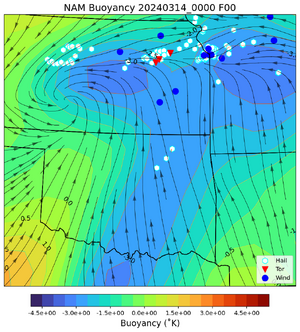
* Now I need a reference:


